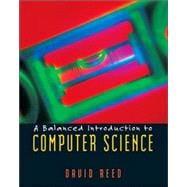
| Introduction and Overview | |
| Computer Basics | |
| HTML and Web Pages | |
| The Internet and the World Wide Web | |
| JavaScript and Dynamic Web Pages | |
| JavaScript Numbers and Expressions | |
| The History of Computers | |
| Abstraction and User-Defined Functions | |
| Algorithms and Programming Languages | |
| Event-Driven Programming | |
| Computer Science as a Discipline | |
| Conditional Execution | |
| Data Representation | |
| Conditional Repetition | |
| Inside the Computer | |
| The von Neumann Architecture | |
| JavaScript Strings | |
| Inside the Computer | |
| Transistors and Integrated Circuits | |
| JavaScript Arrays | |
| Computers and Society | |
| HTML Reference | |
| JavaScript Reference | |
| Browser Basics | |
| Table of Contents provided by Publisher. All Rights Reserved. |
The New copy of this book will include any supplemental materials advertised. Please check the title of the book to determine if it should include any access cards, study guides, lab manuals, CDs, etc.
The Used, Rental and eBook copies of this book are not guaranteed to include any supplemental materials. Typically, only the book itself is included. This is true even if the title states it includes any access cards, study guides, lab manuals, CDs, etc.